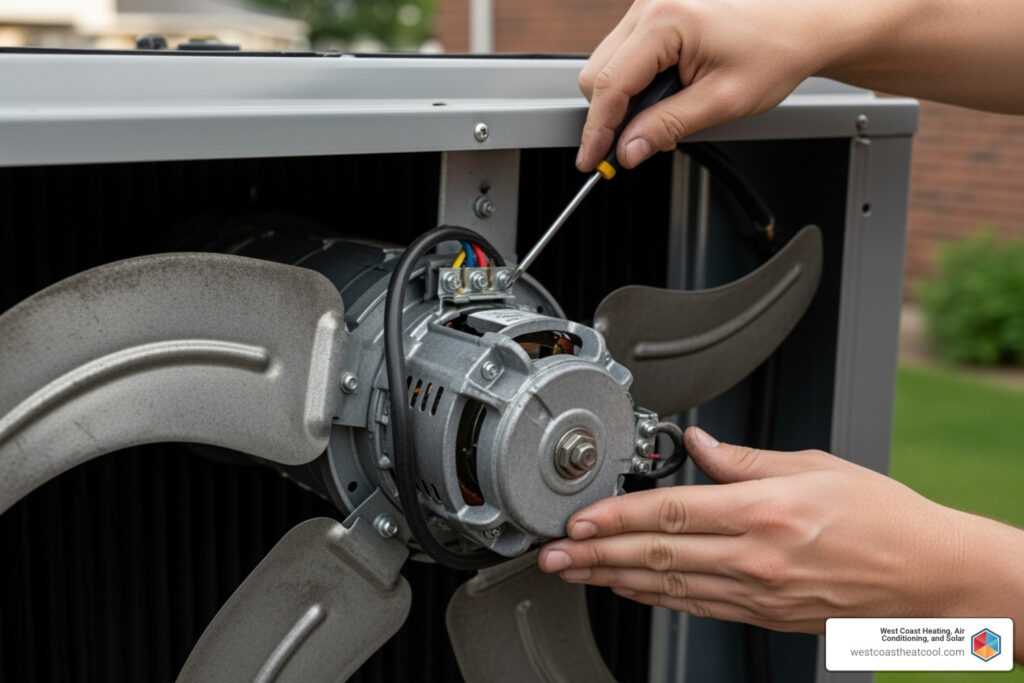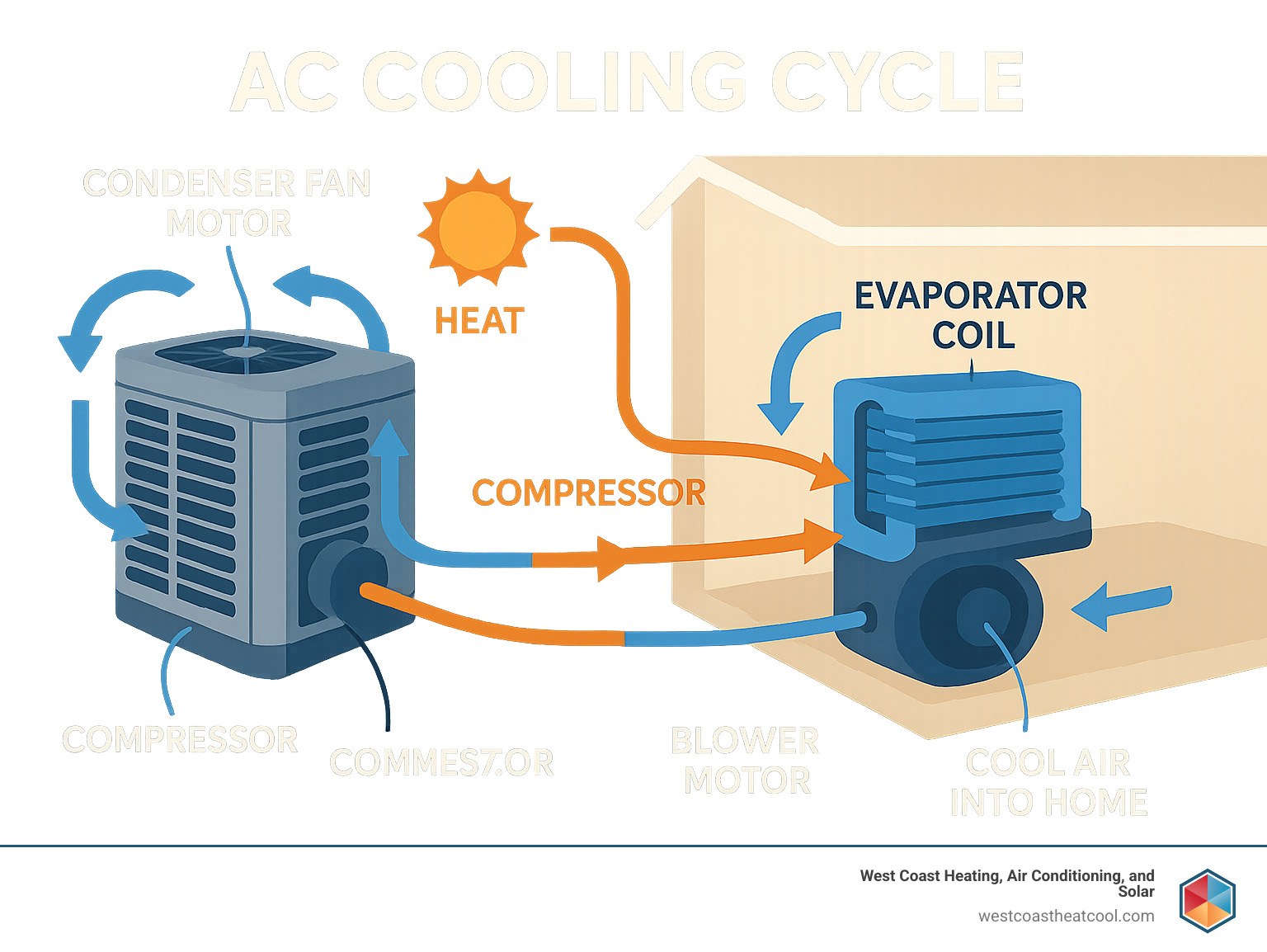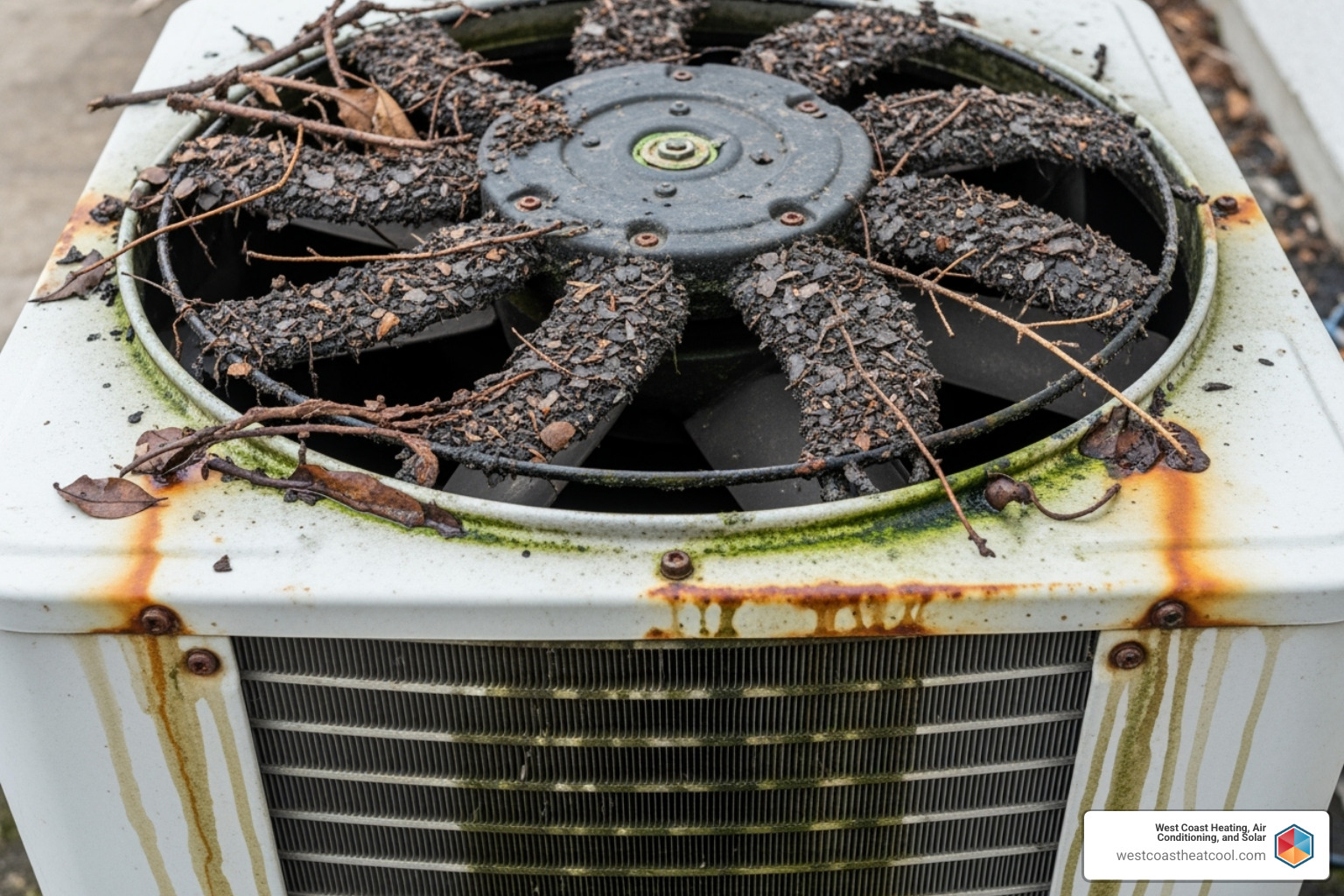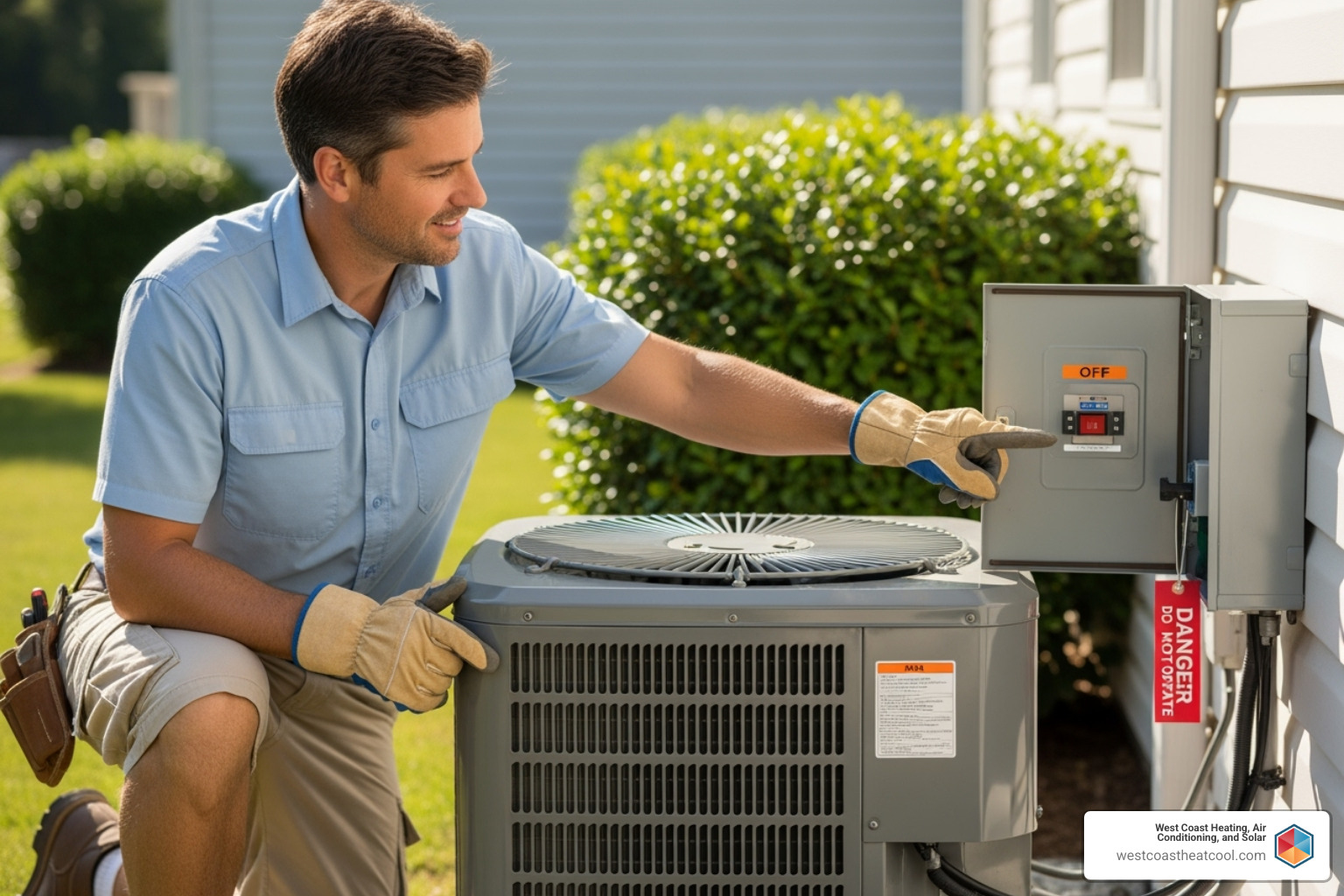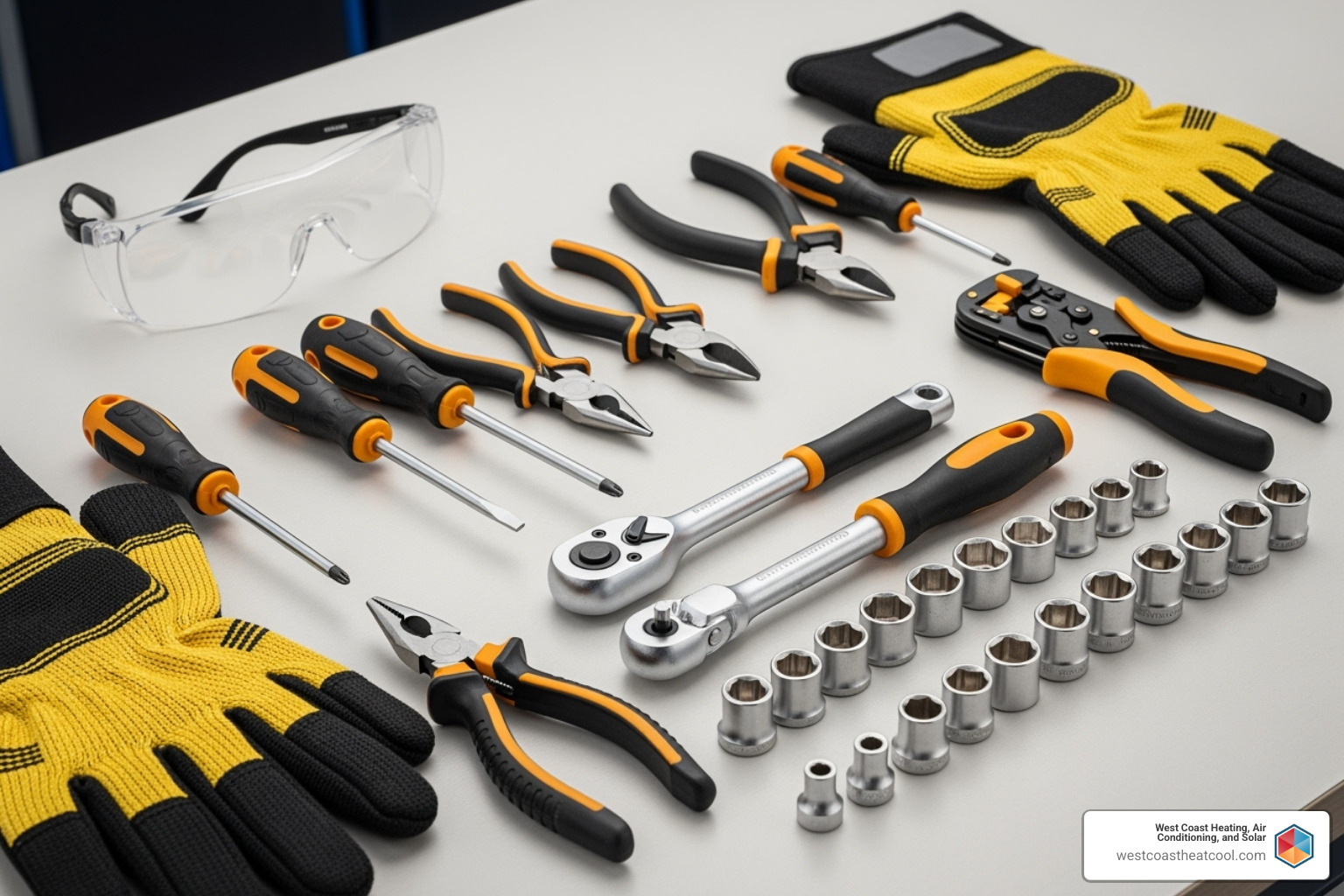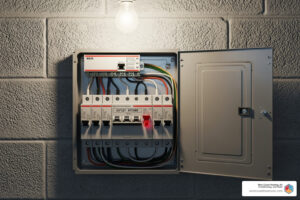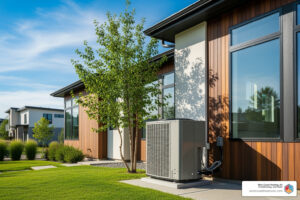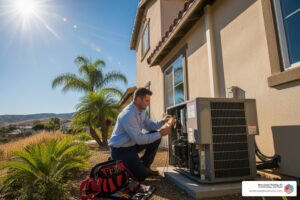Why AC Fan Motor Problems Leave You Sweating in San Diego Heat
AC fan motor repair is a common HVAC issue for San Diego homeowners, especially during scorching summers. If the outdoor fan stops, your AC can’t release heat, leaving you with warm air instead of cool relief.
Here’s what you need to know about AC fan motor repair:
Quick Diagnosis:
- Fan won’t spin: Likely motor or capacitor failure.
- Slow spinning blades: Motor is wearing out.
- Grinding or squealing noises: Worn bearings.
- Humming but not spinning: Usually a bad capacitor.
Typical Repair Costs:
- DIY repair: $100-$400 (parts only)
- Professional repair: $250-$800 (parts + labor)
- Most motors last 10-15 years with proper maintenance.
When to DIY vs. Call a Pro:
- DIY if you’re comfortable with basic electrical work.
- Call a professional for complex wiring or if you lack proper tools.
Many AC fan motor issues can be fixed by handy homeowners, potentially saving hundreds in labor costs. As one HVAC forum user shared: “I replaced my condenser fan motor myself and saved about $350 compared to what the HVAC company quoted.”
Whether it’s a capacitor or a full motor swap, understanding the basics helps you make smart repair decisions.
Understanding Your AC Fan Motor and Its Role
Your AC fan motor is a hardworking hero in your cooling system, making cool air possible on a hot San Diego day. Located in the outdoor unit, the condenser fan motor‘s critical job is to spin the fan blades, blowing air across the condenser coils to release heat.
Your AC doesn’t create cold air; it removes heat. Refrigerant absorbs warmth from inside your home and carries it to the outdoor unit. The fan motor then blows air over the coils, releasing that heat outside. Without this process, your AC cannot cool your home.
Your AC has two fans: the indoor blower motor that circulates cool air and the outdoor condenser fan motor. The outdoor fan is essential for dissipating heat and protecting the compressor—your AC’s heart—from overheating. A failing fan motor leads to high energy bills, strains the compressor, and can cause a domino effect of system failures. This is why understanding AC fan motor repair is so important.
Common Signs of a Failing AC Fan Motor
Catching these warning signs early can save you from a complete system breakdown:
- Fan won’t start: The most obvious sign. You may hear the compressor hum, but the blades are still. Turn off your AC immediately, as this could be a failed motor or a bad capacitor.
- Slow-spinning blades: If the fan turns sluggishly, the motor is likely failing and can’t dissipate heat efficiently.
- Strange noises: A rattling sound may mean loose parts, while grinding or squealing often points to worn bearings. A buzzing noise with no spinning is a classic sign of a bad capacitor.
- Burning smell: This indicates a seriously overheated motor, often caused by dirt buildup or internal failure. Turn the unit off immediately.
- Short cycling: The AC turning on and off repeatedly can be caused by an overheating fan motor.
- Tripped circuit breaker: A failing motor can draw too much current, tripping the breaker as a safety measure. This requires immediate attention.
Common Causes of Failure and When to Consider AC Fan Motor Repair
Knowing why fan motors fail helps you decide if AC fan motor repair is the right step.
- Worn bearings: Over time, bearings that allow the motor shaft to spin smoothly wear down, causing friction and noise before seizing completely.
- Failed capacitor: The capacitor provides the initial jolt of energy to start the motor. When it fails, the motor may hum but won’t start.
- Electrical problems: Loose connections, corroded wiring, or faulty contactors can prevent the motor from getting power.
- Dirt and debris: In San Diego, accumulated dirt, leaves, and dust force the motor to work harder, leading to overheating and failure.
- Lack of maintenance: Without routine cleaning and inspections, small issues can become major breakdowns.
- Physical damage: Bent fan blades from debris or accidents can unbalance the motor, causing vibration and premature wear.
- Age: Most AC fan motors last 10-15 years. As they age, internal components deteriorate, making failure more likely.
A Homeowner’s Guide to AC Fan Motor Troubleshooting
When your AC isn’t cooling, some detective work can help you determine if you need AC fan motor repair.
Safety is critical when dealing with electricity. If you’re uncomfortable at any point, call a professional.
1. Check the Basics: First, check your thermostat. Is it set to “Cool” with a low enough temperature? Next, check the AC unit’s circuit breaker. If it’s tripped, flip it off and then on again. If it trips again immediately, stop and call a professional, as this indicates a serious electrical problem.
2. Perform a Visual Inspection: Turn off all power to the outdoor unit at the disconnect box and the main panel. Never skip this step. Once the power is off, remove the top grille. Clear away any leaves, twigs, or other debris clogging the fan blades. Look for bent blades or signs of damage like burnt wires.
3. Do the “Stick Test”: With the power still off, use a stick to gently push the fan blades.
- If the blades are stiff or won’t spin, you likely have a mechanical problem like seized bearings, meaning the motor needs replacement.
- If the blades spin freely, the issue is likely electrical—most often a faulty capacitor.
4. Differentiate Capacitor vs. Motor Failure: A bad capacitor is a much cheaper fix than a new motor. A humming sound with no spinning is the classic sign of a bad capacitor. You might also see physical signs like a bulging or leaking case. In contrast, a bad motor often involves grinding noises, stiff blades, or getting very hot without spinning.
For more advanced testing with a multimeter, see this guide: How to Troubleshoot a Fan Motor.
Troubleshooting can pinpoint the problem, but always prioritize safety. If you’re unsure, call for professional AC fan motor repair.
Step-by-Step DIY AC Fan Motor Repair Guide
If troubleshooting indicates a bad motor or capacitor, a DIY AC fan motor repair can save you $300-$500 in labor costs, provided you’re comfortable with electrical work.
Essential Tools & Parts:
- Safety gear: Insulated gloves, safety glasses
- Hand tools: Screwdrivers, socket set, pliers, wire strippers
- Electrical tools: Multimeter, wire nuts, electrical tape
- New parts: Replacement motor and capacitor (must match old part specs: HP, RPM, voltage, etc.)
Take a photo of the old motor’s nameplate to ensure you buy the correct replacement parts.
Safety First: High Voltage Warning
Your outdoor unit uses 220V, which can be lethal. Capacitors also store a dangerous electrical charge even when the power is off.
- Kill the Power: Turn off the AC’s circuit breaker at the main panel, then turn off the switch in the disconnect box near the outdoor unit. Use a multimeter to confirm there is no power at the unit’s terminals.
- Discharge the Capacitor: Carefully use an insulated screwdriver to touch both terminals of the capacitor simultaneously. A small spark is normal and indicates the charge has been safely released.
Replacing the Motor
- Access the Motor: Remove the top grille. Take photos of the wire connections before disconnecting anything to use as a reference.
- Remove the Old Motor: Disconnect the wires from the motor and capacitor. Unbolt the motor from its mounting bracket and slide it out. Loosen the set screw on the motor shaft to remove the fan blade, noting its orientation.
- Install the New Motor: Position the new motor so any drain plug faces down. Slide the fan blade onto the new shaft, ensuring it’s centered and facing the correct direction, then tighten the set screw firmly.
- Wire Everything: Using your photos as a guide, connect the wires to the new motor and capacitor with wire nuts, then wrap the connections with electrical tape. Keep the new capacitor from touching metal parts.
- Test Your Work: Reinstall the panels and grille, ensuring the fan has clearance. Restore power at the disconnect box and breaker. Set your thermostat to cool. The fan should start smoothly, pulling air up and out of the unit.
If you feel uncertain at any point, call a professional. Your safety is paramount.
Repair vs. Replacement: Making the Smart Choice
When your fan motor fails, you must decide between repair and replacement. Since fan motors last 10 to 15 years, an AC fan motor repair is often the most cost-effective choice. Replacing a single component is usually a straightforward fix that can add years to your AC’s life.
Cost Factors for AC Fan Motor Repair
Several factors influence the final price of an AC fan motor repair. The motor type is a primary factor; a basic single-speed motor costs less ($100-$200) than a high-efficiency variable-speed ECM motor ($300-$500). Your AC brand can also affect part costs. Always check your warranty status if the unit is under 10 years old, as parts may be covered.
Labor costs in San Diego County typically range from $150 to $300 for a 1-2 hour job. In total, expect to pay $250 to $800 for a professional replacement, which is far less than a new AC system.
When to Consider Full AC Replacement
Sometimes, a full system replacement is the wiser long-term investment:
- Age: If your AC is over 15 years old and requires frequent repairs, replacement may be more cost-effective.
- Major Component Failure: If the compressor or condenser coils have failed, the repair cost may approach half the price of a new unit.
- Refrigerant Type: Older systems using R-22 refrigerant are expensive to service because R-22 is being phased out. Upgrading is often the most practical solution.
DIY vs. Professional AC Fan Motor Repair: A Cost Breakdown
Handy homeowners can see significant savings with a DIY AC fan motor repair.
| Cost Factor | DIY Cost (Parts Only) | Professional Installation (Parts + Labor) |
|---|---|---|
| Condenser Fan Motor | $100 – $400 | Included in total |
| New Run Capacitor | $10 – $50 | Included in total |
| Labor (1-2 hours) | $0 (your time!) | $150 – $300+ |
| Total Estimated Cost | $100 – $450 | $250 – $800 |
However, call a professional if you are not comfortable with 220V electricity or lack the proper tools like a multimeter. Safety risks are real, and a professional repair is faster and ensures the job is done correctly. Also, DIY repairs may void an existing warranty.
Preventive Maintenance for a Long-Lasting AC Fan Motor
Preventive maintenance is key to avoiding costly AC fan motor repair and ensuring your motor lasts. A little care goes a long way, especially during San Diego’s hot summers, as the motor works hard against dirt, debris, and heat.
Follow these tips to extend the life of your fan motor:
-
Regular Cleaning: At least twice a year, turn off the power and clean your outdoor unit. Use a soft brush or shop vacuum to gently remove leaves, grass, and other debris from the fan blades and motor housing. A clean motor runs cooler and more efficiently.
-
Clear the Area: Maintain at least two feet of clearance around your outdoor unit. Trim back shrubs and remove any obstructions that could restrict airflow. Poor airflow forces the motor to work harder, leading to overheating.
-
Ensure the Unit is Level: A unit that isn’t level puts uneven stress on the motor bearings, causing them to wear out prematurely and create grinding noises. Check that the concrete pad it sits on is stable and level.
-
Lubricate if Necessary: Some older motors have lubrication ports that require a few drops of manufacturer-specified oil annually. Most modern motors are sealed and maintenance-free, but check your owner’s manual to be sure.
-
Schedule Annual Professional Tune-Ups: A trained technician can spot issues you might miss, like a failing capacitor or loose electrical connections. During a professional visit, we check refrigerant levels, clean coils, and ensure the entire system is running at peak efficiency.
Regular maintenance not only prevents AC fan motor repair but also lowers energy bills and avoids unexpected breakdowns. For homeowners in San Diego County, our AC maintenance services provide comprehensive care to keep your system running smoothly.
Frequently Asked Questions about AC Fan Motor Repair
As HVAC professionals in San Diego County for nearly three decades, we frequently answer these questions about AC fan motor repair.
How much does it cost to replace an AC fan motor?
You can expect to pay between $250 and $800 for a professional fan motor replacement, including parts and labor. The motor itself costs $100 to $400, depending on whether it’s a standard PSC motor or a more expensive high-efficiency ECM unit. Labor typically adds $150 to $300. If your AC unit is less than 10 years old, check your warranty, as the part may be covered, leaving you to pay only for labor.
How do I know if my AC fan motor is bad or if it’s the capacitor?
This is a common question, as a bad capacitor can mimic a failed motor. A capacitor is much cheaper to replace, so proper diagnosis is key.
- Bad Capacitor Signs: The most common symptom is a humming sound from the outdoor unit with no fan movement. The fan may also start if you give it a manual push (with the power off first, then restored). Visually, a failed capacitor may be bulging or leaking oil.
- Bad Motor Signs: A bad motor is often indicated by loud grinding or screeching noises. The fan blades may feel stiff and difficult to turn by hand (with power off). A burning smell or a motor that is completely silent and unresponsive also points to motor failure.
How long does an AC fan motor last?
Most AC fan motors last 10 to 15 years. Lifespan depends heavily on several factors:
- Maintenance: Regular cleaning and professional tune-ups are the most significant factors in extending motor life. Dirt and debris cause overheating and premature wear.
- Climate and Usage: San Diego’s climate is relatively mild, but dust buildup during dry periods can be a problem without regular cleaning.
- Installation Quality: A properly installed motor with a balanced fan blade will last longer.
- Electrical Supply: Frequent power surges or voltage fluctuations can shorten a motor’s lifespan.
Conclusion
A broken AC fan on a hot San Diego day doesn’t have to be a disaster. This guide has covered the essentials of AC fan motor repair, from diagnosis to DIY fixes. Many fan motor issues, like a simple capacitor replacement or a full motor swap, are manageable repairs that can save homeowners hundreds of dollars in labor.
Remember the key warning signs—a fan that won’t start, strange noises, or humming without spinning—and use the “stick test” to help diagnose the problem. Always prioritize safety when working with high-voltage electricity; if you are not 100% comfortable, call a professional.
Most importantly, preventive maintenance is your secret weapon. Regular cleaning and annual professional tune-ups can help your fan motor last 15 years or more, preventing emergency repairs during a heatwave.
At West Coast Heating, Air Conditioning, and Solar, we’ve helped San Diego County families stay comfortable since 1996. Whether you need advice on a DIY project, professional AC fan motor repair, or system maintenance, our customer-centric team is here to ensure your long-term comfort.
Don’t wait for the next heatwave to find a problem.

